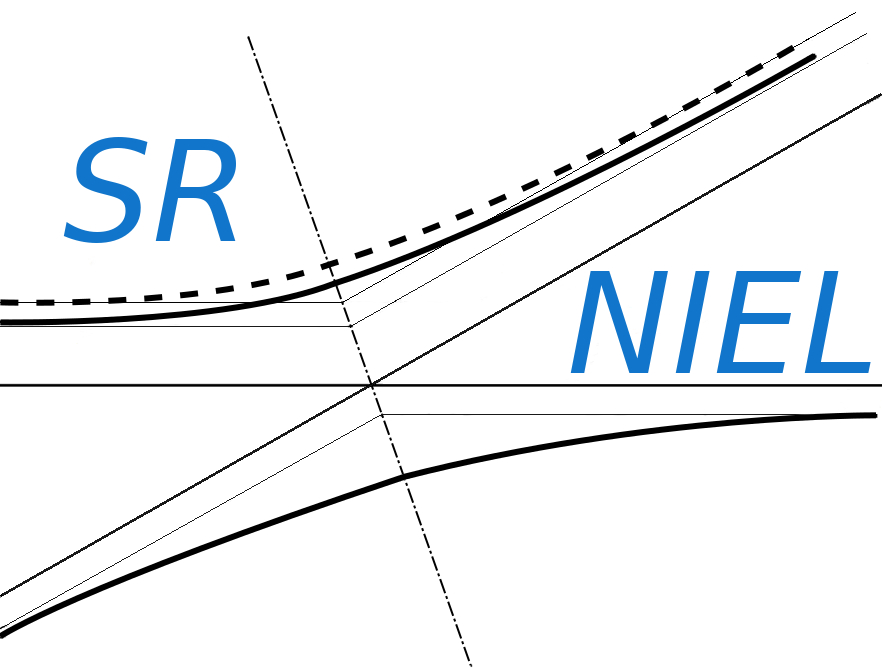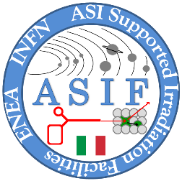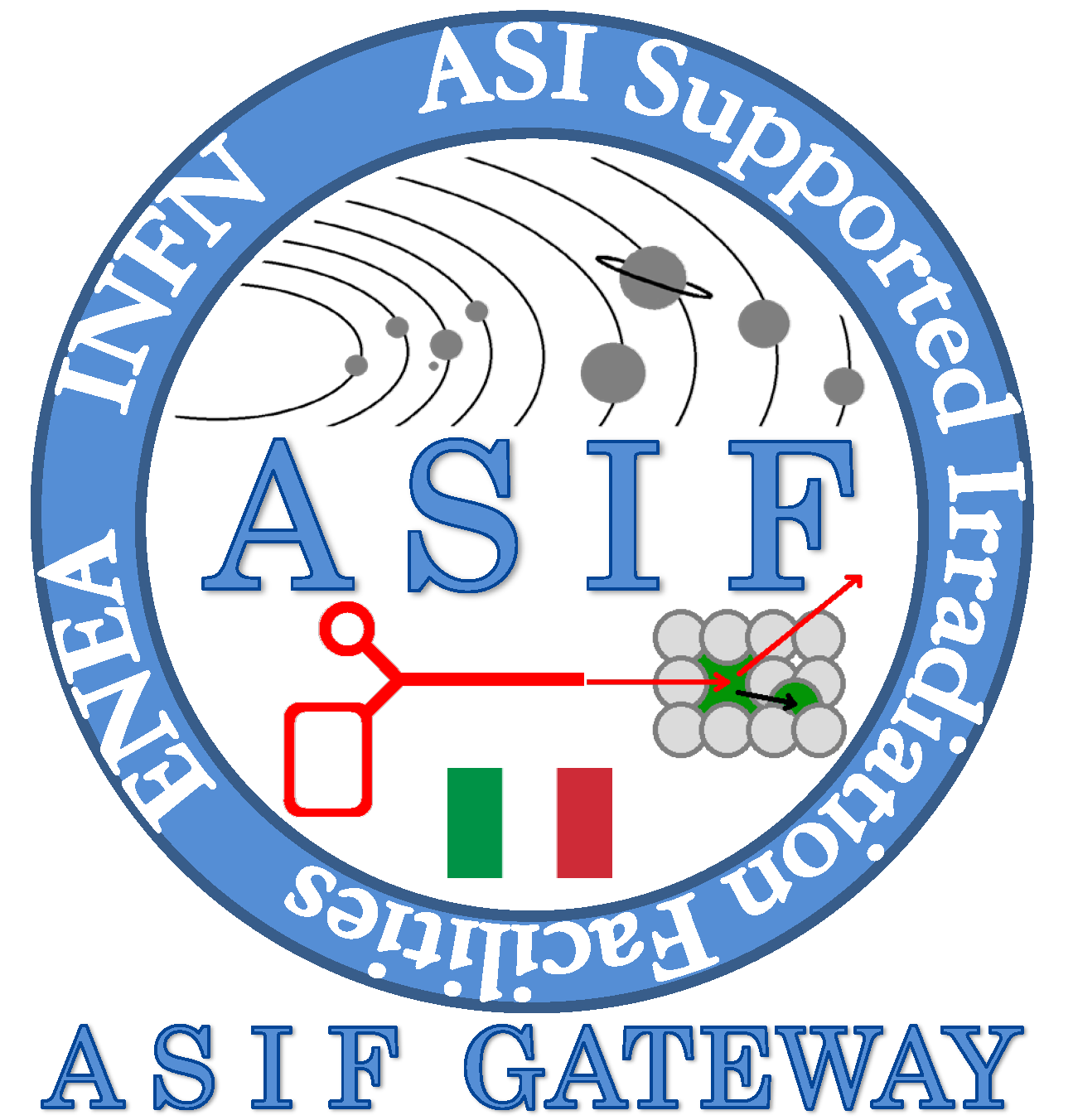HelMod-4, the solar modulation model of galactic cosmic rays employed within SR-NIEL framework for obtaining ion spectra at Earth or in other Heliospheric Locations
By exploiting experimental results, the combined effort of the physicists involved with the Galprop model for propagation in galaxy and HelMod for the propagation in heliosphere, the local interstellar spectra (LIS) for Galactic Cosmic Rays species up to Z=28 (Nickel) were derived. At present, the HelMod modulated spectra framework does not include ultra-heavy galactic cosmic ray ions (UHGCRs, i.e., GCRs with Z>28) due to their expected negligible contribution to the radiation risk evaluation (e.g., SEE rate) in space, particularly when compared to the impact of iron (see Appendix A in Boschini et al. 2024). HelMod model allows one to derived the ion modulated spectra from the corresping LIS. These spectra are available and accessible from the current webpage:
- Modulated galactic cosmic rays spectral fluences calculator at 1 AU from HelMod model
HelMod is a 2D Monte Carlo model to simulate the solar modulation of galactic cosmic rays. The model is based on the Parker transport equation which contains diffusion, convection, particle drift and energy loss. Following the evolution of the solar activity in time, we are able to modulate the local interstellar spectra (LIS) of cosmic ray species down to Earth's location inside the heliosphere. The HelMod forecasting of selected cosmic rays species is illustrated in this webpage. The local interstellar spectra (LIS) for Galactic Cosmic Rays species up to Z=28 (Nickel) derived by means of the GalProp-HelMod join effort are available and accessible from here.
The boundary of the heliosphere, called heliopause (HP), is a contact discontinuity separating the solar cavity -- in which the SW plasma is flowing -- from the interstellar space. It also represents the extreme limit beyond which solar modulation does not affect CR flux. Thus, outside HP the truly pristine LIS of GCR spectra could be observed. After being accelerated in the solar corona (Parker, 1958) SW adiabatically expands in radial direction with supersonic speed. In its journey towards the external regions of the heliosphere SW flow changes its supersonic regime, through the formation of a physical boundary called Termination Shock (TS) which, in practice, separates the inner part of the heliosphere (i.e., the space region from the Sun up to the TS) from the outer region (i.e., the space region from the TS up to the HP), also known as heliosheath (HS). The actual dimensions of the heliosphere are accounted for by scaling the position of TS by the time dependent values obtained as described in Heliospheric boundaries section. The HS is included as a single additional region on top of the 15 inner regions with its actual size as calculated in Heliospheric boundaries section.
It has to be remarked that HelMod modulated spctra exhibit an overall better agreement with AMS-02 data when compared to the other solar modulation models, commonly employed (e.g., see this webpage).
Furthermore, it is worth to note that - as advertised on the GALPROP website - HelMod website can be used as a service package to seamlessly calculate the effects of the heliospheric modulation for GALPROP output files.
How to use this HelMod Calculator
This tools evaluates the modulated spectrum at Earth orbit for theorical LIS evaluated with GALPROP. The particle transport is described using the Helmod Model. For information about the computation method please refear to Monte Carlo Integration page.
The input parameters and options for the tool are described below. Once the input form has been completed, "Submit" button will start the calculation and open the "Results" page (allow for pop-up in your browser settings).
Solar Modulation Model
The website is always updated with the latest HelMod version available, as indicated in the output result.
Cosmic Rays Species
The user can select the wished Cosmic Rays Species with atomic number up to Z=28.
HelMod spectra are averaged over a Carrington rotation duration (e.g., 27.2753 days).
Expected Mission Duration/ Past Missions
User can select the cosmic rays species and the time interval for the interested simulation.
Result
The result page contains the figure of modulated spectrum for free space and correspondent tabulated data. The spectral fluence of the selected cosmic rays species can be used as input data file for the SEE Calculator. The lower energy limit of the spectral cosmic rays fluence corresponds to values indicated here.
Galprop-HelMod join effort
Currently published articles regarding local interstellar spectra (LIS):
- Solution of Heliospheric Propagation: Unveiling the Local Interstellar Spectra of Cosmic Ray Species Astrophys. J. 840:115, 2017
- HELMOD In The Works: From Direct Observations To The Local Interstellar Spectrum Of Cosmic-Ray Electrons Astrophys. J. 854:94, 2018
- Deciphering the Local Interstellar Spectra of Primary Cosmic-Ray Species with HelMod Astrophys. J. 858:61, 2018
- Deciphering the Local Interstellar Spectra of Secondary Nuclei with the Galprop/Helmod Framework and a Hint for Primary Lithium in Cosmic Rays Astrophys. J. 889:167, 2020
- Boschini M J, Torre S, Gervasi M, Grandi D, J\'ohannesson G, Vacca G, Masi N, Moskalenko I V, Pensotti S, Porter T A, Quadrani L, Rancoita P G, Rozza D, Tacconi M, Inference Of The Local Interstellar Spectra Of Cosmic-Ray Nuclei Z < 28 With The {GalProp}-{HelMod} Framework; Astrophys. J. Supplement 250:27, 2020
- Boschini M J, Della Torre S, Gervasi M, Grandi D, Johannesson G, La Vacca G, Masi N, Moskalenko I V, Pensotti S, Porter T A, Quadrani L, Rancoita P G, Rozza D, Tacconi M, A Discovery Of A Low-Energy Excess In Cosmic-Ray Iron: An Evidence Of The Past Supernova Activity In The Local Bubble; Astrophys. J. 913:5, 2021
- Boschini M J, Torre S, Gervasi M, Grandi D, Johannesson G, Vacca G, Masi N, Moskalenko I V, Pensotti S, Porter T A, Quadrani L, Rancoita P G, Rozza D, Tacconi M, A Hint of A Low-Energy Excess In Cosmic-Ray Fluorine, Astrophys. J., 925(2):108, Arxiv:2106.01626 :, 2022; http://dx.doi.org/10.3847/1538-4357/ac313d
- M J Boschini, S Della Torre, M Gervasi, D Grandi, G Jóhannesson, G La Vacca, N Masi, I V Moskalenko, S Pensotti, T A Porter, L Quadrani, P G Rancoita, D Rozza and M Tacconi, Spectra of Cosmic Ray Sodium and Aluminum and Unexpected Aluminum Excess, Astrophys. J. 933 (2022); 147 (15 pp); https://doi.org/10.3847/1538-4357/ac7443
Relevant Bibliography for Helmod



